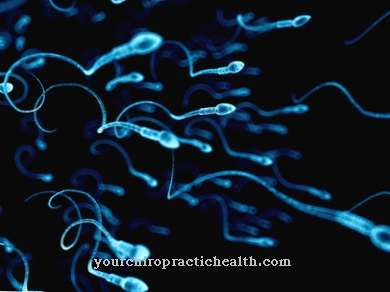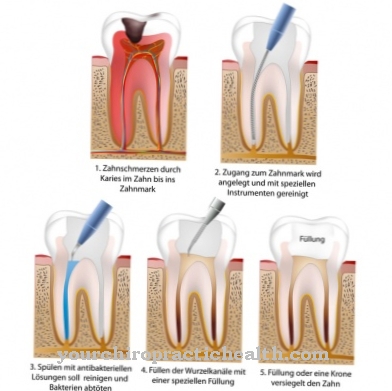In the central nervous system (CNS), which consists of the brain and the spinal cord, there is a liquid called liquor. Some diseases can only be recognized in this liquid. The method for detecting these diseases is called CSF diagnostics.
What is liquor diagnostics?

In the CSF diagnostics the cerebrospinal fluid (liquor cerebrospinalis) is examined in the laboratory. The liquor fluid is formed in the brain and has the function of protecting the brain and the spinal cord from impact. They serve as a kind of cushion for these particularly sensitive regions of the body.
The spinal canal is punctured for CSF diagnostics. A needle is inserted into the spinal cord near the spine in order to get to the liquor. This process is called a lumbar puncture. Some diseases, such as inflammation or chemical changes in the brain or spinal cord, cannot be detected in the blood. This is due to the so-called blood-brain barrier. This is a complex filter system: only a few substances can get from the blood into the liquor and vice versa.
The blood-brain barrier separates the central nervous system from the bloodstream. The purpose of this is to prevent toxins or other harmful substances from entering the central nervous system through the blood. In addition, this barrier ensures the chemical balance in the brain. For diseases that are limited to the central nervous system, CSF diagnostics are therefore necessary.
Function, effect & goals
The CSF diagnostics thus detects diseases that are in the central nervous system and that cannot be detected in the blood. The examination is used if there is a suspicion or symptoms of various diseases. The best known among them is meningitis. In this disease, the membranes of the brain or spinal cord are inflamed. If meningitis is not recognized in time, it can have very serious consequences, including death.
Encephalitis is inflammation of the brain. It can also be detected by CSF diagnostics. For brain tumors, tumors of the spinal cord, multiple sclerosis or bleeding in the area of the central nervous system, CSF diagnostics is an indispensable diagnostic tool.
After the lumbar puncture, the liquor fluid is first examined for its consistency.Some diseases and problems can be identified by the appearance of the liquor. Usually the liquid is colorless and clear. Certain cloudiness or discoloration suggest certain diseases or irregularities.
The final CSF diagnostics, however, take place in the laboratory. There, the number of cells or pathogens such as viruses or bacteria can be precisely determined so that the clinical picture can be clearly identified. Central nervous system disorders are often associated with changes in CSF fluid. The suspicion of a certain disease of the CNS can be confirmed or rejected by the CSF diagnostics.
Risks, side effects & dangers
As a diagnostic tool, the CSF diagnostics very important to identify diseases in the central nervous system. However, this remedy also carries some risks.
Cerebrospinal fluid diagnostics must never be performed in patients with increased intracranial pressure. The increased intracranial pressure should be ruled out beforehand by a suitable examination (a CT), because there is a risk that the cerebrospinal fluid collection in the spinal cord will cause the brain to sag slightly and parts of it will be pinched. As a result, there is an acute danger to life, for example breathing arrest because the respiratory center is in a potentially entrapment area. A measurement of the intracranial pressure is therefore indispensable before a CSF diagnosis.
After the examination, some patients complain of nausea and headaches, especially in the forehead area. These symptoms are usually not worrisome because they go away on their own after a few hours. Patients are advised to drink sufficient fluids before and after the CSF test, as this can alleviate symptoms. In addition, a 24-hour bed rest is recommended after the examination so that the body can regenerate stress-free.
As with any prick into human tissue, there is also a risk of infection and bleeding with CSF diagnostics. However, this risk is very small.












.jpg)



.jpg)










.jpg)
